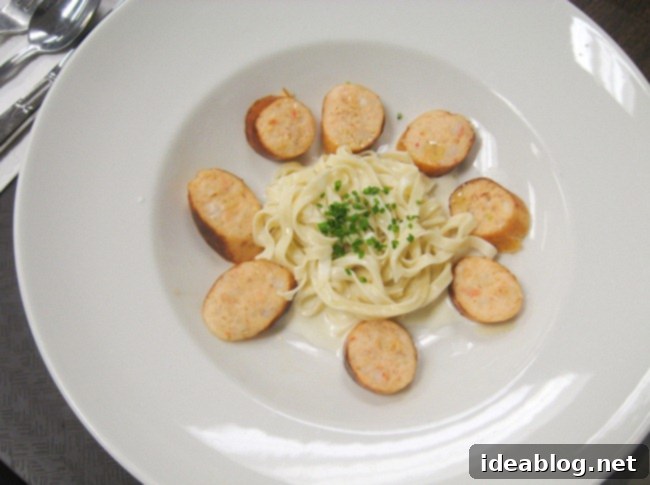Culinary Journey: Mastering Seafood Sausage, French Classics, and Decadent Desserts
The days here at culinary school are flying by, and I can hardly believe we’re already almost a month into Phase II. The pace is intense, but incredibly rewarding. These next two months promise to be a blur of learning, skill-building, and culinary exploration, culminating in my externship – a thought that fills me with both excitement and a healthy dose of apprehension. Every day brings new techniques, challenging recipes, and a deeper understanding of the art of cooking, pushing me closer to my goal of becoming a professional chef. Today was no exception, packed with diverse dishes that showcased both intricate preparation and comforting flavors.
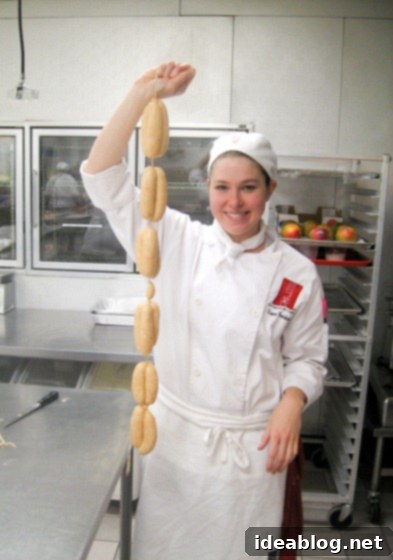
Crafting Exquisite Seafood Sausage with Homemade Pasta
Our culinary adventure for the day began with a sophisticated starter: seafood sausage, beautifully paired with fresh homemade pasta and a rich cream sauce. This dish truly highlighted the importance of preparation and foresight in a professional kitchen. Having successfully prepared the sausage the day before, we were able to dedicate our full attention to perfecting the pasta and its accompanying sauce. This advance planning is a crucial skill learned in culinary school, allowing us to manage complex recipes efficiently and focus on executing each component flawlessly.
The Art of Pasta Making, Modernized
Unlike our earlier lessons in Phase I, where we painstakingly kneaded pasta dough by hand, today we embraced modern kitchen efficiency by utilizing a food processor. This method significantly speeds up the dough-making process without compromising quality. The processor quickly incorporates the ingredients, creating a smooth, elastic dough in a fraction of the time it would take manually. It’s a testament to how traditional techniques can be adapted and enhanced with contemporary tools, proving invaluable in a fast-paced kitchen environment. Learning both methods gives us a comprehensive understanding of pasta production, from artisanal to streamlined, ensuring we can adapt to any kitchen setting.
Developing a Harmonious Cream Sauce
To complement our delicate seafood sausage and fresh pasta, we crafted a luxurious cream sauce designed to enhance the flavors without overpowering them. The foundation of this sauce began with gently sautéing finely sliced leeks until tender and translucent, releasing their sweet, oniony aroma. We then introduced finely chopped scallops, not only for their tender texture but also to infuse the sauce with an extra layer of exquisite seafood flavor and natural sweetness. A splash of dry Vermouth was added next, used to deglaze the pan and lend a subtle, herbaceous complexity that brightened the overall profile and added a hint of sophistication. Finally, a generous amount of rich, heavy cream was incorporated, slowly simmering to create a velvety texture that coated the pasta beautifully. A small but vital addition of fresh lemon juice provided a touch of acidity, cutting through the richness of the cream and balancing the flavors perfectly, preventing it from becoming cloying. Once strained through a fine-mesh sieve to achieve a perfectly silky consistency, the sauce was garnished with finely chopped chives, adding a fresh, vibrant finish. Our expertly seared sausages, cooked in clarified butter to achieve a golden-brown crust and juicy interior, were then nestled atop the pasta and sauce, creating a truly memorable dish. It’s a surreal experience to now be creating this dish, which I distinctly remember tasting during my very first visit to the school, back when applying was just a dream. It truly brings my culinary journey full circle.
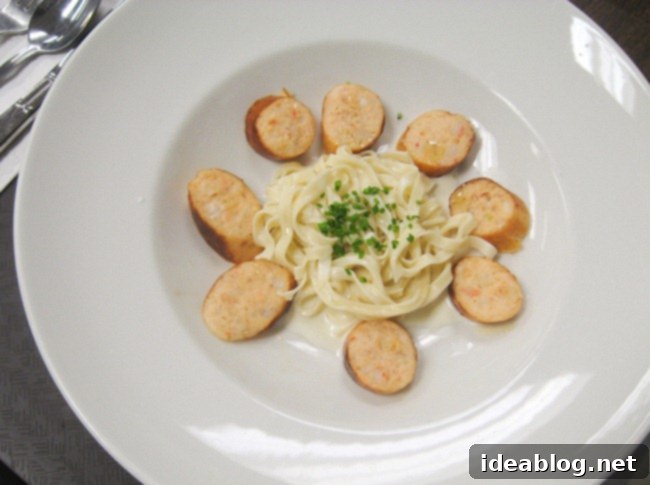
Mastering French Classics: Poulet Basquaise and Pommes Macaire
Our main dish transported us to the vibrant flavors of southwestern France with poulet basquaise. This traditional Basque chicken stew is a true embodiment of rustic comfort food, renowned for its rich, aromatic qualities and vibrant color. It’s a dish that speaks of slow cooking, robust ingredients, and a hearty meal perfect for any occasion. The foundation of this flavorful stew starts with a mirepoix of aromatic vegetables: sweet onions, colorful bell peppers (typically red and green for a vibrant hue and balanced flavor), and ripe chopped tomatoes, all gently sautéed to soften and release their natural sugars. Minced garlic adds its pungent depth, creating a fragrant base for the chicken pieces which are seared to lock in their juices and flavor.
Building Depth with Espagnole and Chicken Stock
To elevate the flavor profile of our poulet basquaise, we incorporated two crucial liquid components. First, a measure of Espagnole sauce – a classic mother sauce in French cuisine. This “fortified, highly reduced veal stock” is a testament to the depth and complexity achievable in haute cuisine. Espagnole, prepared over many hours, offers rich, savory characteristics that provide an umami backbone, significantly elevating the entire dish beyond a simple stew. Alongside this, quality chicken stock was added, creating a luscious braising liquid that tenderized the chicken and infused it with layers of flavor from the vegetables and reductions. The chicken pieces are then slowly braised in this aromatic liquid until they are fork-tender and permeated with the essence of the robust sauce, ensuring that every bite is a delightful combination of savory chicken and a deeply flavored, comforting sauce.
The Versatility of Potatoes: Introducing Pommes Macaire
As a side dish, we prepared simple sautéed spinach, providing a fresh, green counterpoint to the rich stew. But the star of our sides was pommes macaire, another fascinating potato preparation that continues to surprise me with the sheer endless possibilities of this humble vegetable. It seems like every day we discover a new way to transform a potato, and I often wonder how many more innovative potato dishes could possibly exist! While it might seem like a silly question, the culinary world continually proves that the potato’s versatility is truly astounding, capable of endless transformations from humble to haute cuisine.
Pommes Macaire is essentially a sophisticated potato cake, offering a delightful textural contrast with a crispy exterior and a fluffy, creamy interior. The process begins with baking potatoes until they are perfectly tender. Once cooked, the fluffy interior is carefully scooped out, leaving the skin intact. This warm, starchy potato flesh is then mashed with a fork, incorporating a generous knob of butter to create a rich, smooth consistency. This buttery mashed potato mixture is then seasoned lightly and pressed evenly into a small cake pan or ring mold, creating a compact disk. The potato cake is then baked again until its surface turns a beautiful golden brown and develops a delicate, slightly crispy crust that encases the soft, flavorful potato within. We served these savory potato cakes by cutting them into elegant wedges, providing a wonderful accompaniment to the robust poulet basquaise, demonstrating how a simple ingredient can be elevated through clever technique and precise execution.
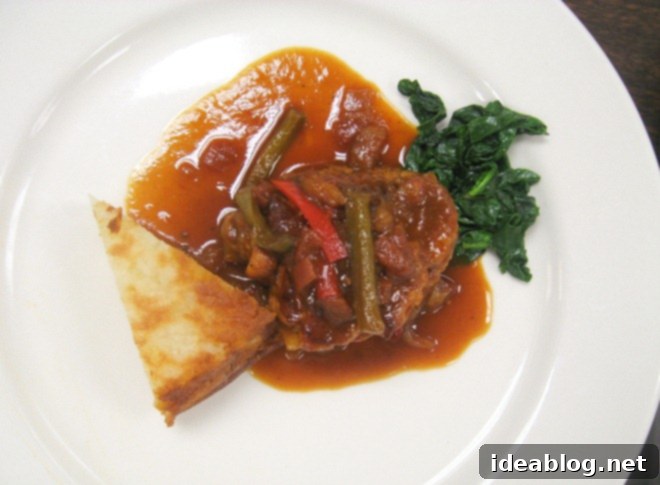
A Sweet Finale: Crafting Light and Fluffy Chocolate Mousse
No culinary day is complete without dessert, and today’s sweet creation was an exquisite chocolate mousse, artfully presented in delicate tulip cookies. These cookies, while beautiful and elegant, are notoriously tricky to handle without breakage, requiring a light touch and quick hands – another skill refined in the professional kitchen where presentation is paramount. This particular chocolate mousse stood in delightful contrast to the version we learned in Phase I, which was denser and richer. This time, our focus was on achieving an incredibly light, airy, and fluffy texture, a hallmark of superior dessert craftsmanship.
The Elegance of Italian Meringue
The secret to this lighter mousse lies in the incorporation of Italian meringue. This advanced technique involves cooking sugar to the precise “soft-ball stage” (around 240-245°F or 115-118°C), then slowly and carefully pouring the hot syrup into rapidly whisked egg whites. The hot syrup cooks the egg whites, creating a stable, glossy, and voluminous meringue that provides incredible lift and structure to the mousse. This method ensures a safe, pasteurized product with an unparalleled airy quality, making it ideal for delicate desserts. Once the Italian meringue was perfectly formed and cooled slightly, we gently folded in a generous quantity of melted, high-quality dark chocolate, ensuring not to deflate the precious air incorporated into the meringue. A final fold of softly whipped cream further lightened the mixture, contributing to its ethereal texture and creamy mouthfeel. This technique results in a chocolate mousse that truly melts in your mouth, leaving a delicate and lingering chocolate flavor rather than a heavy sensation.
Garnishing is an essential part of presentation, and for our chocolate mousse, we added a sprinkle of finely shaved chocolate for visual appeal and a dusting of powdered sugar to enhance its sophisticated look. While the process sounds straightforward, the true challenge lies in precisely cooking the sugar syrup to the exact soft-ball consistency. Even a few degrees off can impact the stability and texture of the Italian meringue, highlighting the immense importance of precision and temperature control in pastry arts. Mastering such delicate techniques is what truly differentiates a home baker from a trained pastry chef, transforming simple ingredients into a work of art.
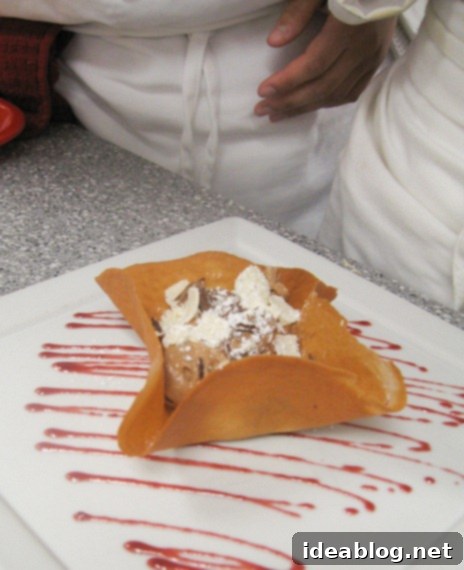
Preparing for the Ultimate Test: Theory and Practical Exams
The intensity of our culinary training doesn’t just come from daily cooking; it also stems from the periodic evaluations that test our accumulated knowledge and skills. Tomorrow afternoon, we face our fourth theory exam. This comprehensive test covers approximately 50 questions, delving into everything from detailed lecture notes and specific culinary techniques to the intricacies of various dishes and the precise butchery cuts we’ve studied. It demands a thorough recall of information, emphasizing the theoretical foundations that underpin our practical work and ensuring we understand the ‘why’ behind the ‘how’.
Following the theory exam, Friday brings the much-anticipated practical exam. This is where our hands-on skills are put to the ultimate test under timed conditions, demonstrating our proficiency in execution, organization, and adherence to professional standards. We’ll be tasked with preparing a specific menu, judged on everything from mise en place to plating. I am incredibly grateful for the small buffer day between the two exams, a welcome change from Phase I where they were often back-to-back. This brief interlude provides a crucial opportunity to mentally shift gears, consolidate practical knowledge, and perhaps even get a few extra hours of restful sleep before demonstrating our culinary prowess in the kitchen. The pressure is on, but these exams are vital milestones in our journey to becoming accomplished chefs, proving our readiness for the next stage of our culinary careers.
With a head full of recipes and techniques, and a heart full of anticipation, I’m now off to hit the books and review my notes. The path to mastery is paved with consistent effort and relentless study. Wish me luck!
